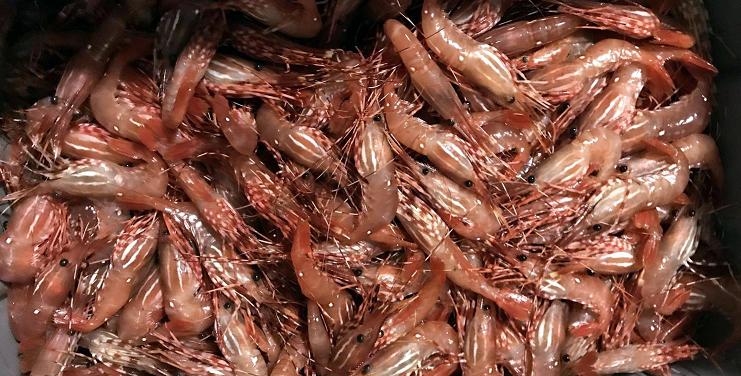 It was early on a Friday afternoon and despite the breezy grey weather I was soaked to my screaming bones with sweat and cursing Crystal’s Uncle Calvin (who got me into my current situation) under my breath. Brycen (Cal’s son) and I were hauling a very sketchy aluminum rickshaw overflowing with heavy metal crab traps up an impossibly steep gangway. It took both of us to get the beast up and over to Calvin and his new friends; a gang of grizzled old fisherman who did nothing to help us, but sure seem to have opinions on how we’re doing it wrong.
It was early on a Friday afternoon and despite the breezy grey weather I was soaked to my screaming bones with sweat and cursing Crystal’s Uncle Calvin (who got me into my current situation) under my breath. Brycen (Cal’s son) and I were hauling a very sketchy aluminum rickshaw overflowing with heavy metal crab traps up an impossibly steep gangway. It took both of us to get the beast up and over to Calvin and his new friends; a gang of grizzled old fisherman who did nothing to help us, but sure seem to have opinions on how we’re doing it wrong.
I was trying my very best to look tough in front of this motley collection of bums and pirates, despite my suspicion that there was a better way to go about this whole affair. Of course I was the only one on this particular commercial fishing dock that had no sea legs. Calvin and Brycen both grew up on fishing boats as (I suspect) Cal’s father and maybe even father’s father did. They knew all the moves, the lingo and the unspoken rules of the dock. Me, I was just an extra pair of hands.
After all the crab traps were up on dry land and packed into Cal’s trailer I joined the group of mostly fifty-ish dudes in windbreakers and stained sweatpants to soak up a little ancient mariner wisdom: Turns out fisherpeople care more about home renovations and last night’s hockey score. Oh well.
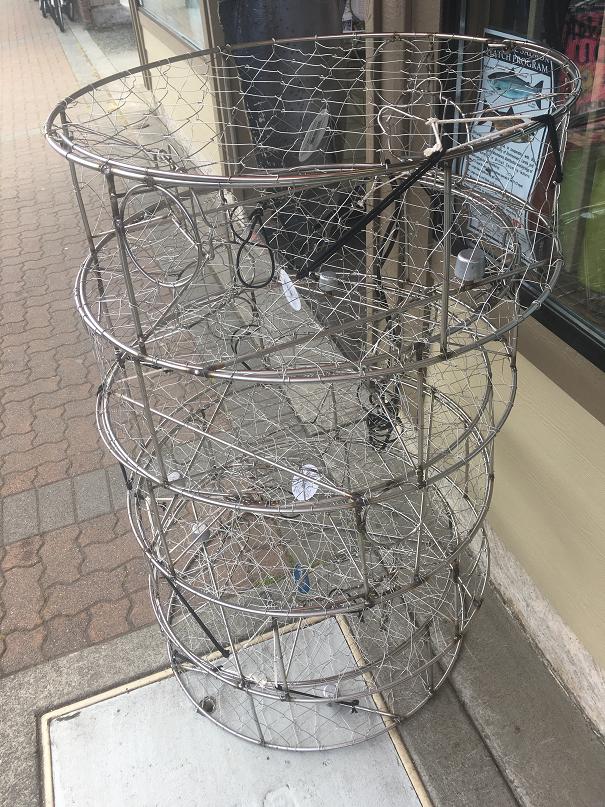 Just before we headed out another leathery dude in rubber boots tromps up with a couple brand new traps under each arm and a big grin on his face. Every one of the assembled fishermen gave the traps a careful once over to make sure they weren’t off their boat before they relaxed and greeted Mr. Boots.
Just before we headed out another leathery dude in rubber boots tromps up with a couple brand new traps under each arm and a big grin on his face. Every one of the assembled fishermen gave the traps a careful once over to make sure they weren’t off their boat before they relaxed and greeted Mr. Boots.
“Where you steal those from?” One guy needled, “They aren’t rusty enough to be from around here” and another, “You sure you got a receipt for those?” Mr. Boots laughed, “Got ‘em from my brother. Free!” All the eyebrows in the assembled mob went up. It seems fishing traps were pretty expensive and were jealously horded by each boat’s crew.
The traps were roughly the same size as the ones we just hauled around so I, the ignorant landlubber, figured I could weigh in. “So uh, you going out crabbing today?” Mr. Boots gave me a confused look and followed my gaze to his new toys. “You mean these? Nah man, these are PRAWN traps! See! Those are CRAB traps!” He points to the mountain of traps we just got finished loading into the trailer. Everyone had a good laugh at poor confused me, but I was determined to somehow stay in the conversation. “How much you think you’ll get for a trap full of prawns?”
He just shook his head and smiled wistfully, “We’d sell the crabs sure, but the prawns… They’re for us!”
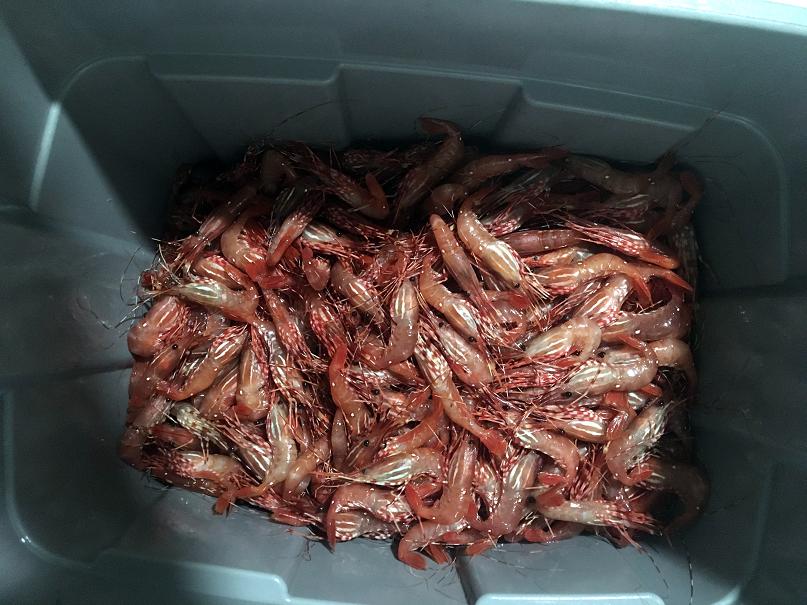 Back at home Calvin opened a large camping freezer to reveal my payment for an afternoon’s hard work: Spot prawns! It was filled to the brim with hundreds of bright red, glittering, skittering sea bugs! The very same little buggers that Mr. Boots was going out to get for him and his crew.
Back at home Calvin opened a large camping freezer to reveal my payment for an afternoon’s hard work: Spot prawns! It was filled to the brim with hundreds of bright red, glittering, skittering sea bugs! The very same little buggers that Mr. Boots was going out to get for him and his crew.
Now I’d already proved I knew nothing about prawn trapping (or “prawning”) but after years in the kitchen industry I sure do know a thing or two about the actual prawns themselves:
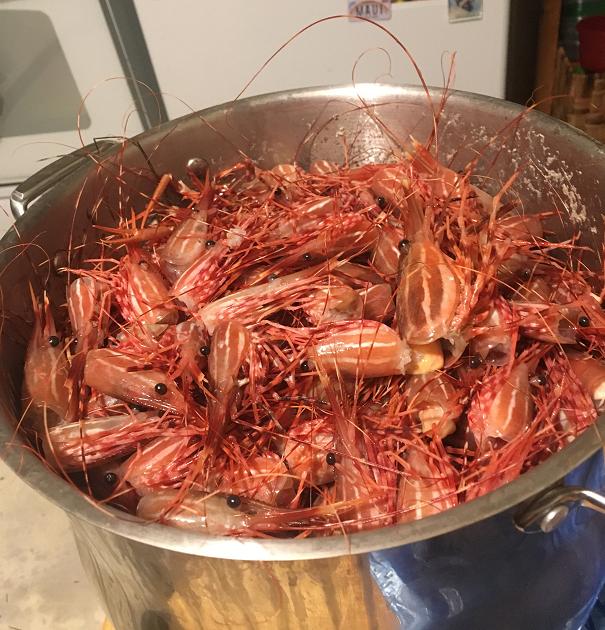 Proper Identification
Proper Identification
Spot Prawns are the largest of the Northwest Coast’s family of shrimp and shrimp-shaped crustaceans, growing almost as big as your hand during its brief four year life in the frigid Pacific Ocean. They are covered in a brilliant red carapace decorated with white stripes and bright spots on the first and fifth sections of its abdomen. Watch out for the serrated horn (called a “Rostrum”) sticking out between its little bug eyes, its sharp enough to prick your hand if ‘ya grab it wrong.
They are trapped from Oregon to Alaska, but the prawns caught between our very own Vancouver Island and mainland BC are considered completely sustainable by the David Suzuki Foundation, The Monterey Bay Seafood Watch and the Vancouver Aquarium’s Ocean Wise program. This is thanks to a series of restrictions set by Fisheries and Oceans Canada and local First Nation bands on where, when and how many prawns can be fished by a single boat.
All these rules mean that when the Spot Prawn season opens mid-May it’s like a hurricane! Boats all over the island come screaming into dock with holds full of prawns. Most of this catch is destined for the voracious markets of Japan, but a bit comes trickling down to local fishmongers, festivals like the Big One in Vancouver and fishermen’s families likes us. It’s a good time to be alive!
Speaking of alive, these guys are feisty! Spot prawns should hit the kitchen alive or just freshly killed with their heads still attached. A cooler full of ice like the one Calvin brought is ideal for storing the prawns but they shouldn’t spend more than a couple hours in there. An enzyme in spot prawns will go wild and start breaking down the flesh soon after death and ontop of that they quickly discolour if submerged in tap water for more than an hour. Once you’ve got ‘em home it’s essential to get processing quickly!
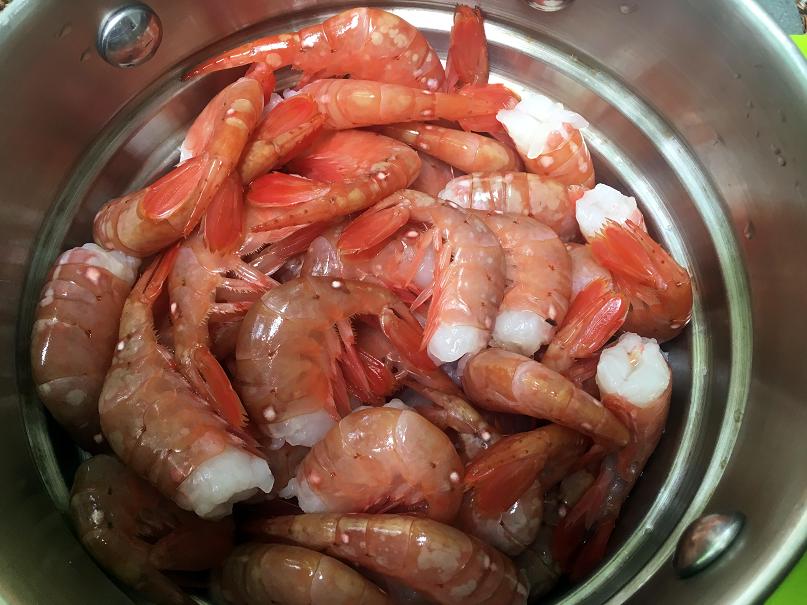 Processing
Processing
The first and most important thing to know before processing prawns is just how sticky and smelly the whole affair is. If you have the option of doing part or the whole shebang outside, do it! Grab a lawn chair and roll up next to the garden with a bunch of plastic buckets and a garden hose handy or prepare to clean your kitchen for hours afterward.
Give your prawns a quick rinse in cold water to dislodge any sea grit and seaweed left on ‘em and drain immediately. A cheap plastic colander is ideal for this. Go through and make sure the prawns look fresh, bright red and free of any blotches or injuries that might be infected. Any Grey or brownish prawns should be discarded along with any immature red crabs that have stowed away… No meat on ‘em.
Spot prawns can be cooked any number of ways: Head-on, head-off, shelled, tail on or off. It’s best to eat them right away, but if you’re dealing with a whole cooler full like I did it’s best to set aside a bowl full of whole prawns for immediate eating and the rest should be frozen head-off.
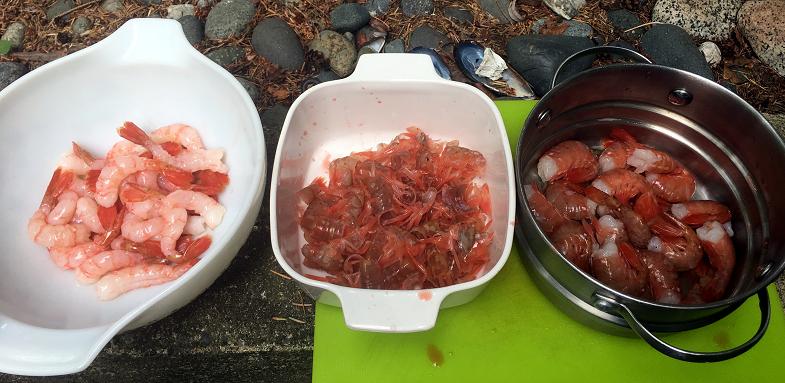 Grab a prawn and pinch with a bit of pressure on the back of its armored head right when it connects to the abdomen. Hold onto the abdomen and slowly ratchet the prawn up and down while gently pulling the head away from the rest. It’ll pop off without much effort. There are a couple arteries that will dribble when the head comes off and that can sometimes stain the prawn’s translucent flesh, just wipe them off with a dry cloth. Put the heads into one bowl and the tails into another.
Grab a prawn and pinch with a bit of pressure on the back of its armored head right when it connects to the abdomen. Hold onto the abdomen and slowly ratchet the prawn up and down while gently pulling the head away from the rest. It’ll pop off without much effort. There are a couple arteries that will dribble when the head comes off and that can sometimes stain the prawn’s translucent flesh, just wipe them off with a dry cloth. Put the heads into one bowl and the tails into another.
I know I’ve harped on this quite a bit already, but time is of the essence. Get these buggers frozen as quickly as possible by laying out a couple large Ziploc freezer bags on sheet pans and stuff them with just enough prawn tails to fill the bag in a single, flat layer. Depending on the size of the prawns you can get anywhere from ten to twenty five tails per bag. Fill each bag with just enough water to submerge your prawns and completely seal ‘em. With the bags lying flat on the sheet pans it should only take a couple hours to completely freeze. The same process works with the heads.
These bag-bricks will last for months in the freezer without any adverse effects to the prawn’s flavour or texture. Whenever you’re in the mood, just grab a brick out and thaw it out in a sink full of cold water.
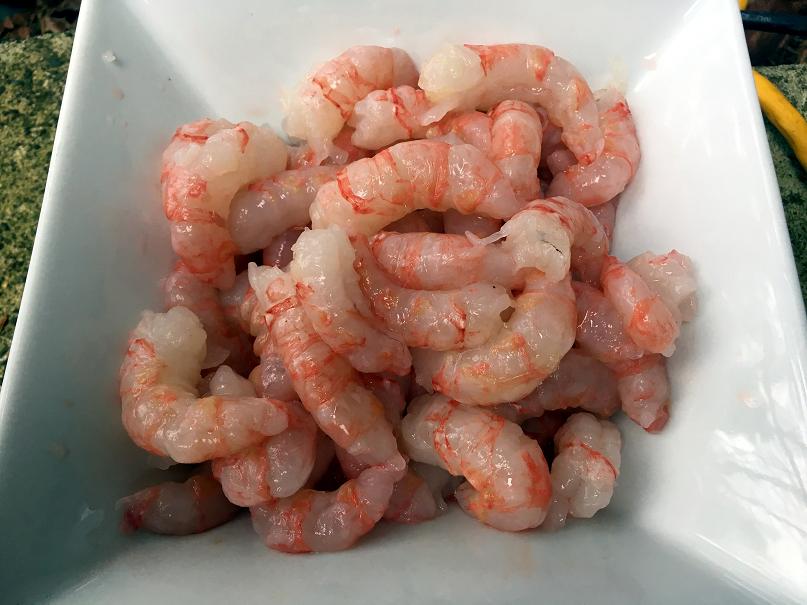 Taste and Texture
Taste and Texture
The red-streaked, crystalline flesh of a spot prawn is both firm and delectably yielding with a striking sweet ‘n buttery taste. Too much heat can easily change all that into a dense, mealy mess so most chefs prefer to serve ‘em raw or just barely cooked. If you’re like Crystal and only eat prawns cooked then just a minute in some butter or deep fried will give you all the crunch without any of the squish.
Butter, miso, soya, peas, bitter greens, chillies and citrus all enhance the soft, sweet taste of spot prawns and many types of cuisine (I’m thinking Japanese, Chinese, Thai, Basque, Cajun and Creole) tend to hit their prawns (sometimes referred to simply as “Shrimp”) with quite a bit of spice to balance out the natural sweetness. Spot Prawns should be considered a premium prawn, a Lexus or Mercedes Benz of shellfish and used only in recipes that don’t over season or (once again, cannot overstate this!) overcook them.
The Japanese – who I already mentioned buy up the majority of our summer bounty – strip the armour off the tails and serve them as sashimi with only a couple well-placed knife cuts to tenderize and add a bit of extra texture. A hit of good shoyu and a squeeze of lime is all the seasoning needed. The heads are deep-fried and turn into crunchy little bar snacks.
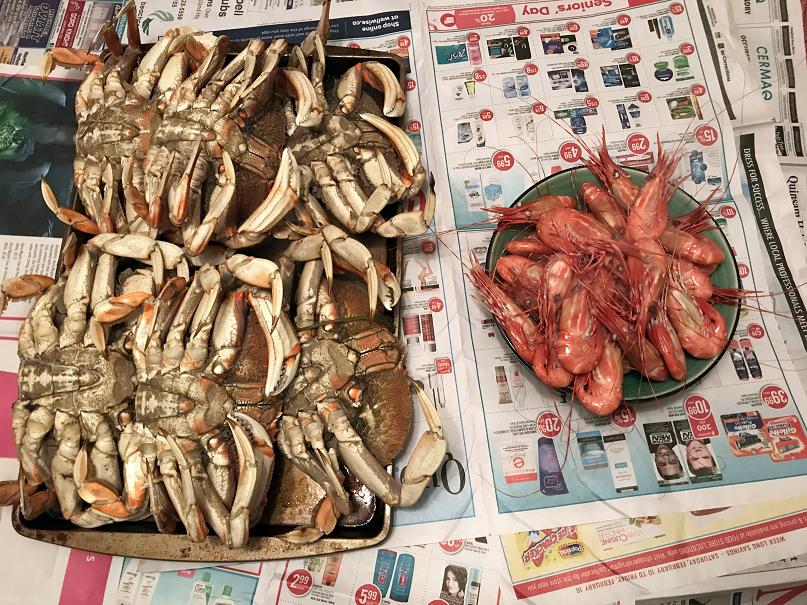 The heads can also be roasted or steamed and (to the horror of your loved ones) sucked on to get at the delicious juices inside or simmered to create a beautiful stock packed with sweet prawny flavour for bisque or Thai-style hot ‘n sour soup.
The heads can also be roasted or steamed and (to the horror of your loved ones) sucked on to get at the delicious juices inside or simmered to create a beautiful stock packed with sweet prawny flavour for bisque or Thai-style hot ‘n sour soup.
Spot prawn meat keeps a bit of its chew even when it’s been pounded or chopped and therefore makes a great filling for dumplings and stuffed pastas. Considering the luxury car nature of these sea bugs don’t jack up your filling with lots of extras, just keep it simple. Save any assertive flavours or spices for the sauce or accoutrements, ‘cause these spot prawns are solid on their own and will definitely hold up their end of the dish and surprise your guests/loved ones.
And whatever way you decide to serve your prawns, make the whole affair a celebration! Get your family and friends into the kitchen and have them help peel or chop or fry the prawns and eat as you go!